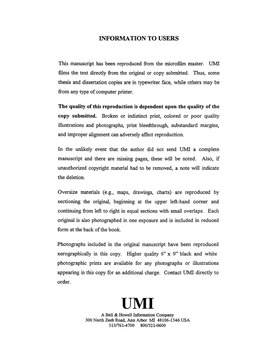| dc.contributor.advisor | Roegiers, Jean-Claude, | en_US |
| dc.contributor.author | Shu, Zhengying. | en_US |
| dc.date.accessioned | 2013-08-16T12:30:33Z | |
| dc.date.available | 2013-08-16T12:30:33Z | |
| dc.date.issued | 1999 | en_US |
| dc.identifier.uri | https://hdl.handle.net/11244/5827 | |
| dc.description.abstract | In this dissertation, an approach, which is based on the dual-porosity concept and takes into account rock deformations, is presented to derive rigorously a set of coupled differential equations governing the behavior of fractured porous media and two-phase fluid flow. The finite difference numerical method, as an alternative method for finite element, is applied to discretize the governing equations both in time and space domains. Throughout the derived set of equations, the fluid pressures and saturations as well as the solid displacements are considered as the primary unknowns. | en_US |
| dc.description.abstract | The numerical model and simulator, RFIA (Rock Fluid InterAction), developed in this dissertation can be a powerful tool to solve difficult problems not only in petroleum engineering such as ground subsidence, borehole stability and sand control, but also in civil engineering such as groundwater flow through fractured bedrock and in environmental engineering such as waste deposit concerns in fractured and unconsolidated formations. As an example of application in petroleum engineering, the waterflooding process in a deformable fractured reservoir was numerically simulated and analyzed. | en_US |
| dc.description.abstract | Finally, sensitivity analyses were carried out to investigate the relative importance of some required parameters to the overall behavior of a deformable fractured reservoir. | en_US |
| dc.description.abstract | The model is tested against the case of single-phase flow in a 1-D consolidation problem for which analytical solutions are available. An example of coupled two-phase fluid flow and rock deformations for a scenario of a one-dimensional, fractured porous medium is also discussed. | en_US |
| dc.description.abstract | Only recently has one realized the importance of the coupling of fluid flow with rock matrix deformations for accurately modeling many problems in petroleum, civil, environmental, geological and mining engineering. In the oil industry, problems such as reservoir compaction, ground subsidence, borehole stability and sanding need to be simulated using a coupled approach to make more precise predictions than when each process is considered to be independent of the other. Due to complications associated with multiple physical processes and mathematical representation of a multiphase now system in deformable fractured reservoirs, very few references, if any, are available in the literature. | en_US |
| dc.format.extent | xv, 185 leaves : | en_US |
| dc.subject | Rock deformation. | en_US |
| dc.subject | Engineering, Civil. | en_US |
| dc.subject | Oil reservoir engineering. | en_US |
| dc.subject | Engineering, Mining. | en_US |
| dc.subject | Engineering, Petroleum. | en_US |
| dc.subject | Two-phase flow. | en_US |
| dc.subject | Engineering, Environmental. | en_US |
| dc.subject | Geophysics. | en_US |
| dc.title | A dual-porosity model for two-phase flow in deforming porous media. | en_US |
| dc.type | Thesis | en_US |
| dc.thesis.degree | Ph.D. | en_US |
| dc.thesis.degreeDiscipline | Mewbourne School of Petroleum and Geological Engineering | en_US |
| dc.note | Source: Dissertation Abstracts International, Volume: 60-05, Section: B, page: 2317. | en_US |
| dc.note | Adviser: Jean-Claude Roegiers. | en_US |
| ou.identifier | (UMI)AAI9930844 | en_US |
| ou.group | Mewbourne College of Earth and Energy::Mewbourne School of Petroleum and Geological Engineering | |
